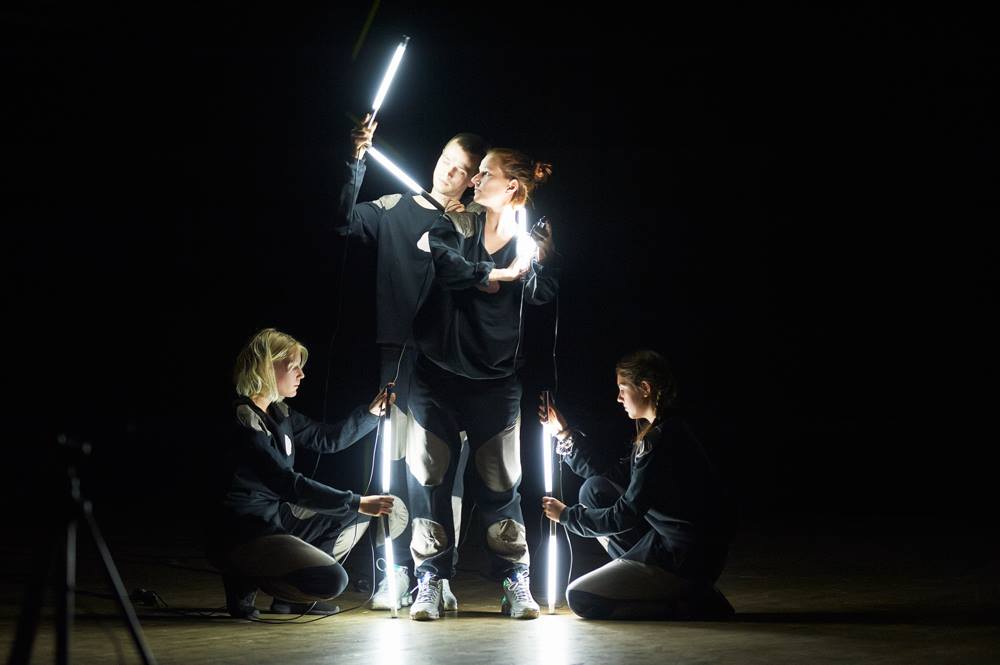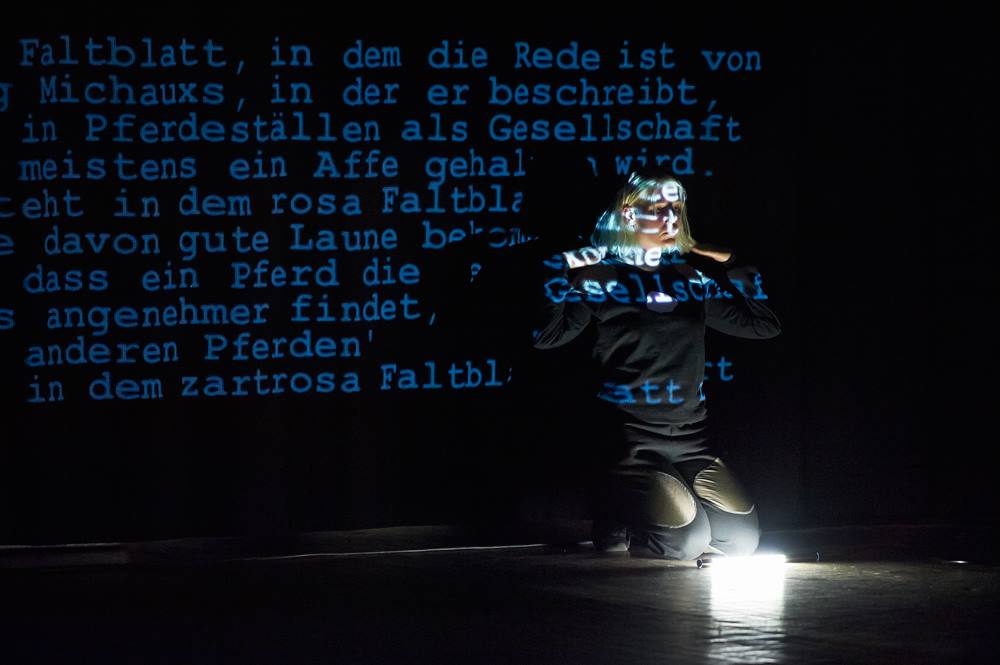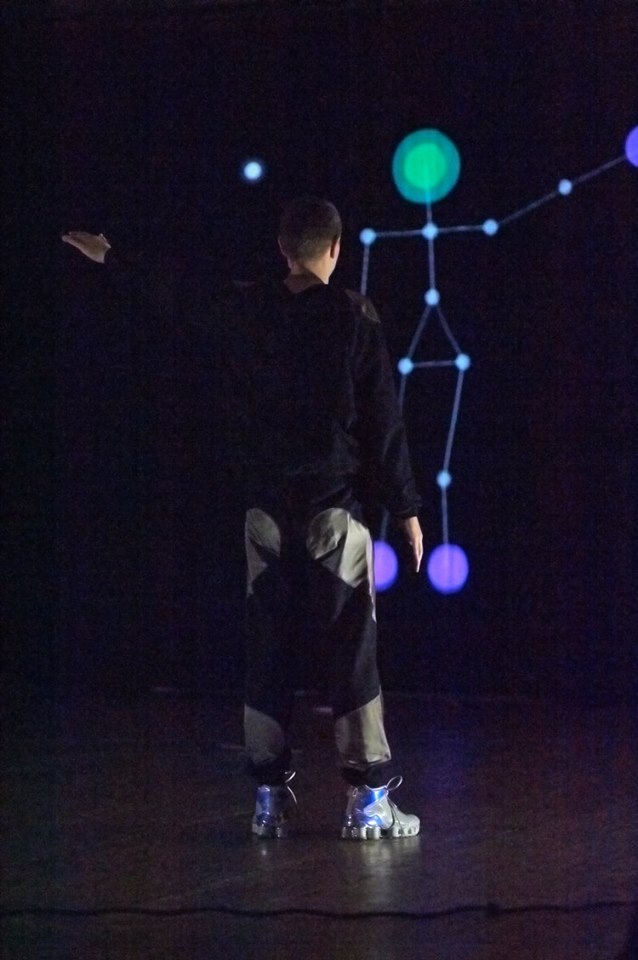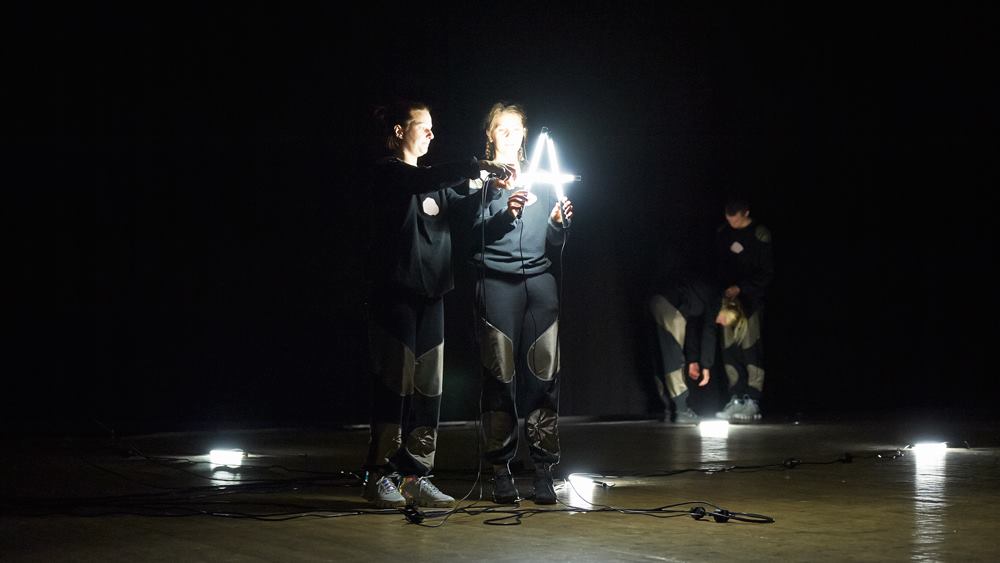Dance on Semiotic Level
Criticism of performance SCHHLTTLR/VKTRN_txt_fetzen_
Han Yan
Time: October 4, 2015, 7:30 pm
Location: Schwere Reiter Tanz/ Dachauer Straße 114, 80636 Munich, Germany
A dark room, glowing neon bulbs, odd bits of words, dancers dressed in black. These were my first impressions of SCHHLTTLR/VKTRN_txt_fetzen_, a performance developed by Mirko Hecktor, Daniel Kluge and Andreas Neumeister.
What is a human movement? How can it be interpreted? What is the connection between the two? Why do people associate dance with word fragments? How do we create a society via communication? Such questions are at the center of the performance. While before my eyes an abstract dance unfolded, its clarity nevertheless was not lost.
In one scene, four dancers constructed a stick figure out of neon lights that moves, waves, and decays (img.1). Very abstract human movements appear from Merce Cunningham’s Motion Capture, a tracking method that allows human movements to be captured and converted into a format recognizable by computers (img.3). In most scenes, actors recited verbal fragments with specific gestures (img.2). On a semiotic level, the signs resemble speech. Language’s usage either aligned with or against gestures is one of the highlights of the performance.
A gesture or a verbal fragment, like a tree, is a sign. How to interpret it is semiotics, a process in which something functions as a sign and different components (namely the external sign shape, the material object and the meaning of the sign) relate to each other. There are many possibilities in this process. For example, in Andreas Neumeister's accompanying text, DAF stands for German American Friendship or German as a Foreign Language, BDM for Bundesverband Deutscher Milchviehhalter (Federal Association of German Dairy Farmers) or Bund Deutscher Mädel (Association of German Girls). This multiplicity of interpretation depends on the different contexts or communication embodied in the performance by the costumes. The dancers' costumes are wired and connected to a computer via radio circuits. The costumes act as a interface between the body and the computer. Samplers on the dancers' bodies trigger the phrases or word snippets forming a social network.
While the interfaces firm technical communication, they also embody intertextual references: a sign, like a gesture, a snippet of a word, or a letter, always moves between signs, their recipients, and the cultural context. Semiotics is not a closed system. A sign or a dance have multiple possibilities. SCHHLTTLR/VKTRN_txt_fetzen_ liberates the meaning of human movement and shows the future of dance.




